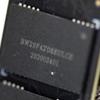SSD Performance Read and Write (linear) performance analysis
SSD Performance Linear Read and Write performance analysis
In this chapter of the review, we will fill the SSD 100% with data and monitor what will happen with write performance. So if an SSD is 2TB, we'll read and then write continuously. This way we can see how the SSD will respond towards massive read and write operations.
Caching with built-in dynamic random-access memory (DRAM) allows minor writes to be stored and then flushed to the SSD as a single large write, resulting in improved read/write performance and the prevention of write amplification on the SSD. For cost and longevity reasons, many TLC-based SSDs do not include DRAM, instead relying on “direct TLC write” to write data to the SSD. Because DRAM is significantly quicker than NAND flash, DRAM-less SSDs may offer a cost-savings advantage, but they may suffer a performance penalty as a result.
As a solution to the sluggish read/write performance of TLC SSDs, manufacturers have added an SLC cache, sometimes known as a pSLC cache, into their products (pseudo). The amount of space available is determined by the capacity of the SSD. If there is still some free SLC cache space available, the SSD's read/write performance is comparable to that of SLC NAND, as long as the space has not been totally utilized. When the SLC cache is completely depleted, the firmware (FW) initiates background garbage collection in order to clear off the remaining space. Additionally, while garbage collection is taking place, data is still being sent to the drive, which has an adverse effect on its overall performance. With this test, we can examine what happens when the cache fills up and the write speed falls back to the lowest feasible value.
Linear read performance
We can observe that read performance is a constant, we average out at 6300 MB/sec throughout reading the entire disk capacity, impressive. The one dip was a result of me doing something in the background btw.
We write an entire 2 terabytes of SSD capacity here (linear). And on any MLC/TLC/QLC NAND storage device, the infamous Achilles heel always kicks in somewhere: once the pSLC buffer is depleted, you're back to bare raw direct TLC write performance. When linear data writing is performed (2TB writes! ), we arrive at an average of 1200 MB/sec. Keep in mind that during the first 32% of the SSD's capacity, 655 GB (!) of writing performance remains constant at high perf; that's quite incredible.



